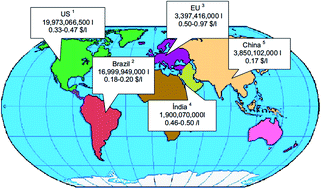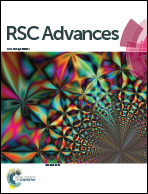A perspective on bioethanol production from biomass as alternative fuel for spark ignition engine
Abstract
The increasing consumption of fossil fuels has led to the development of alternative fuels for the future. Domestic biofuel production and the utilization of alternative fuels can decrease dependency on petroleum oil, reduce trade deficits, reduce air pollution and reduce carbon dioxide emission. Bioethanol is a renewable fuel produced by the fermentation of sugar which is derived from plants such as sugarcane or beet, maize, or cassava etc. However, bioethanol consumption in an engine is approximately 51% higher than gasoline since the energy per unit volume of ethanol is 34% lower than for gasoline. Bioethanol is an oxygenated fuel that contains 35% oxygen, which can reduce particulate matter and NOx emissions caused by combustion of the fuel. Therefore, bioethanol–gasoline blends can significantly reduce petroleum use and GHG emission. In addition, utilization of lignocellulosic materials in bioethanol production is the most viable pathway from an environmental point of view. This paper reviews the current status and technologies involved in bioethanol production and the properties and engine performance from various biomass feedstocks which are the recommended sustainable alternative fuel in the future.


 Please wait while we load your content...
Please wait while we load your content...